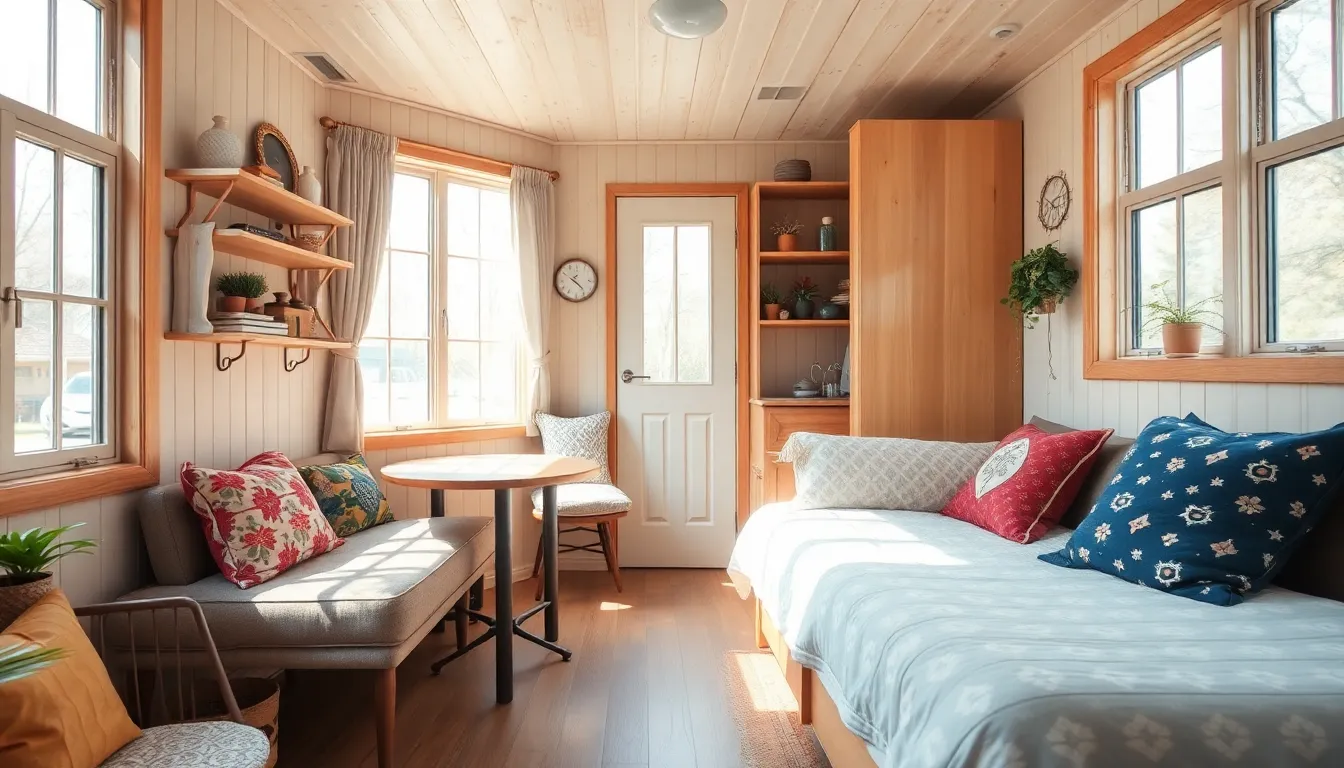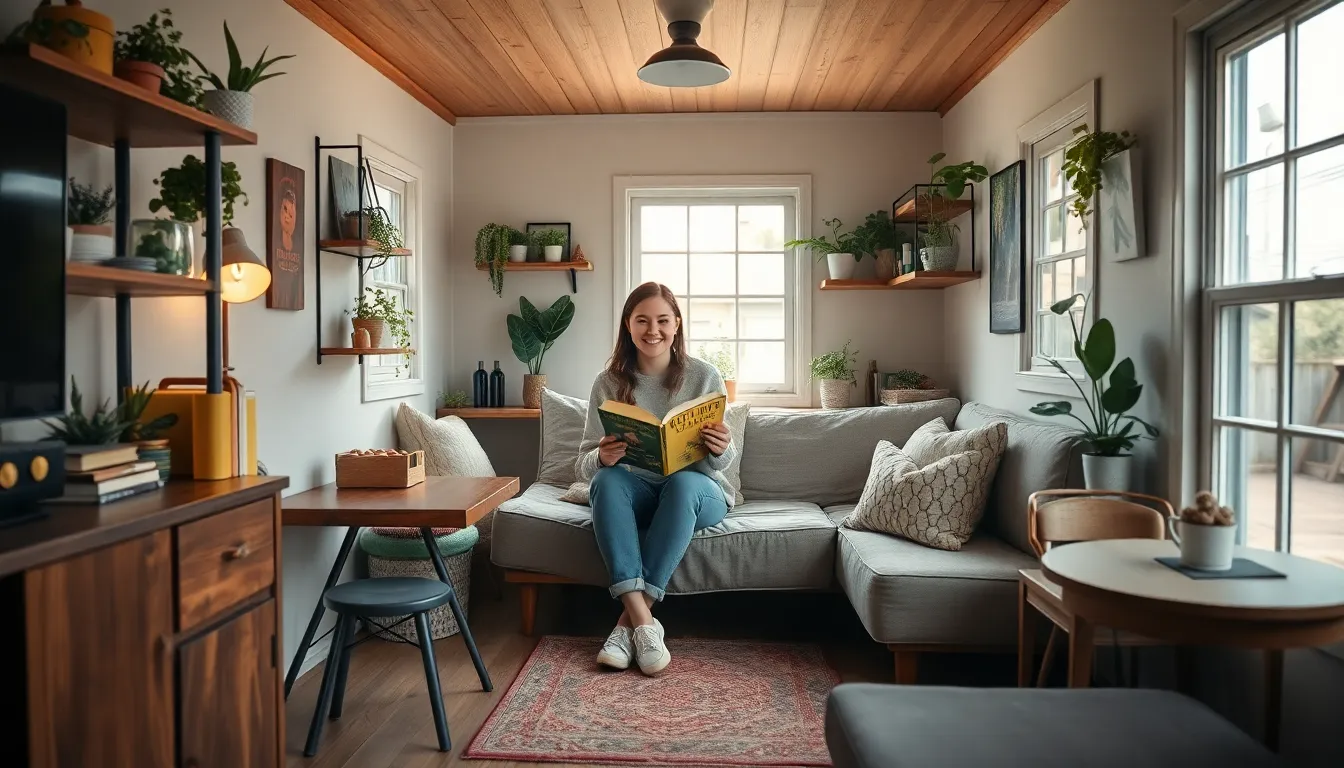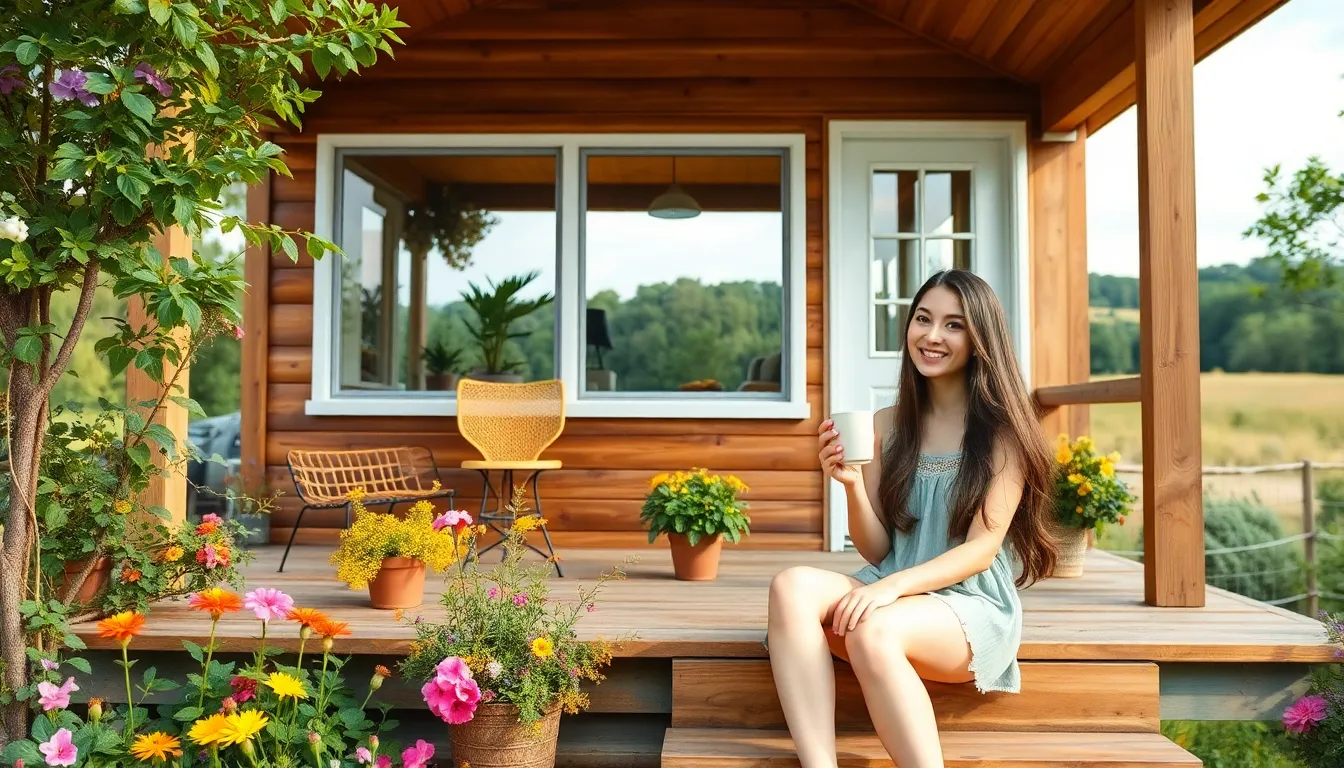Table of Contents
ToggleTiny homes are all the rage, and for good reason. Who wouldn’t want to live large in a pint-sized paradise? With clever design choices, these compact spaces can become the ultimate cozy retreats, proving that good things really do come in small packages. Gone are the days of oversized furniture and sprawling layouts; it’s time to embrace the art of maximizing every square inch.
Understanding Tiny Homes
Tiny homes serve as innovative living solutions that cater to a minimalist lifestyle. Compact sizes, typically ranging from 100 to 400 square feet, allow for reduced environmental impact and lower living costs. Many people find charm in the simplicity and efficiency these homes provide, promoting a clutter-free existence.
Design flexibility plays a crucial role in optimizing space. Multi-functional furniture, such as foldable tables and sofa beds, maximizes usability within limited square footage. Creative storage solutions, like under-bed drawers and vertical shelves, help keep tiny homes organized and functional.
Additionally, tiny homes often feature open-concept layouts. Such designs create an illusion of spaciousness, making areas feel less confined. Enhanced lighting, including large windows and skylights, further contributes to the airy atmosphere that many seek in small spaces.
Sustainability remains a key factor for many choosing tiny living. Many opt for eco-friendly materials and energy-efficient appliances, reducing their carbon footprint. Smart technology integration, including energy management systems, allows for efficient energy use in tiny homes.
Communities embracing tiny living are also on the rise. These neighborhoods cultivate a sense of belonging among residents who share similar lifestyle choices. Such environments foster a unique social dynamic, encouraging connections and collaboration around sustainability and minimalism.
Understanding the nuances behind tiny home living helps individuals appreciate the thoughtful designs and lifestyle transformations. Each element, from architecture to community, contributes to the appeal of this compact, efficient way of living.
Key Principles of Interior Design for Tiny Homes

Designing a tiny home requires strategic planning and creative solutions to maximize functionality and style. Several key principles guide this process.
Maximizing Space Efficiency
Space efficiency plays a crucial role in tiny home design. Innovative storage solutions will enhance the living experience. Consider vertical shelving units to draw the eye upward and utilize wall space. Pocket doors save precious floor area while allowing for flow between rooms. Open floor plans eliminate barriers and create a sense of spaciousness. Utilize under-bed storage or bench seating with internal compartments to conceal belongings, ensuring a clutter-free environment. Recessed lighting illuminates areas without consuming valuable space, contributing to an inviting atmosphere.
Choosing Multi-Functional Furniture
Multi-functional furniture transforms limited spaces. Opt for sofas that convert into beds for versatility. Tables can double as workspaces and dining areas, ensuring they serve multiple purposes. Selecting ottomans or benches with hidden storage maximizes utility while providing extra seating. Folding chairs allow for flexible arrangements when hosting guests. Consider nesting tables that can expand or contract based on need. By prioritizing furniture that adapts to various functions, tiny homes can maintain their charm without sacrificing comfort or practicality.
Color Schemes and Aesthetics
Color plays a crucial role in the overall aesthetics of tiny homes, greatly influencing the perception of space.
Bright and Light Colors
Bright and light colors create an airy feel in tiny homes. Soft whites and pale pastels reflect natural light, enhancing the openness of small spaces. Ensuing this, light shades on walls can visually expand rooms. Some owners opt for accents of vibrant colors, which add personality without overwhelming the area. Warm neutrals like taupe and beige offer a calming effect, ensuring a cozy atmosphere. By balancing these paler tones with colorful accessories, residents can personalize without sacrificing depth or warmth. Consequently, maintaining a cohesive color palette contributes to a harmonious design.
Incorporating Texture and Patterns
Incorporating texture and patterns enriches the visual appeal of tiny homes. Layering textiles like cushions, throws, and rugs introduces dimension and warmth. With options like geometric prints or organic motifs, patterns can provide focal points that draw the eye. Contrast can enhance visual interest—smooth finishes can be complemented by rough textures, such as reclaimed wood or woven materials. To further personalize spaces, mixing patterned items adds character while keeping the overall design cohesive. Attention to texture encourages a welcoming environment, perfect for tiny living.
Essential Design Elements
Effective interior design in tiny homes hinges on maximizing functionality and comfort. Utilizing essential design elements transforms small spaces into stylish, efficient living environments.
Smart Storage Solutions
Clever storage solutions play a vital role in tiny homes. Vertical shelving reduces floor space consumption while keeping belongings organized. Under-bed storage boxes make the most of often-overlooked areas. Multi-functional furniture, such as ottomans with hidden compartments, adds both seating and storage. Custom-built furniture maximizes wall space, providing tailored solutions that fit unique lifestyles. Incorporating hooks and pegboards offers easy access to frequently used items, promoting a clutter-free environment.
Lighting Considerations
Lighting significantly affects the perception of space in tiny homes. Natural light creates an open, airy feel, enhancing the overall atmosphere. Large windows and strategically placed mirrors reflect light and create visual depth. Ambient lighting provides warmth, while task lighting highlights functional areas like kitchens and workspaces. Layering different light sources, including pendant lights and floor lamps, adds versatility to any room. Choosing light fixtures with fine designs contributes to the aesthetic without overwhelming space.
Embracing the tiny home lifestyle opens up a world of creative possibilities in interior design. By focusing on innovative solutions and maximizing every inch of space, individuals can create a comfortable and stylish environment. The principles of minimalism and sustainability not only enhance the living experience but also foster a sense of community among tiny home dwellers.
With thoughtful design choices like multi-functional furniture and effective storage solutions, tiny homes can truly reflect personal style while maintaining functionality. As more people seek to simplify their lives, the charm of tiny homes continues to resonate, proving that less can indeed be more.



